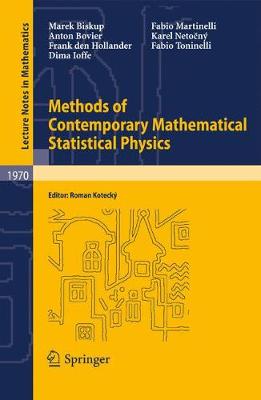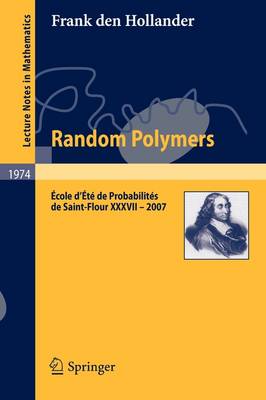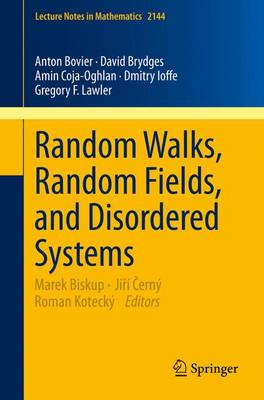Lecture Notes in Mathematics
3 primary works
Book 1970
Methods of Contemporary Mathematical Statistical Physics
by Marek Biskup, Anton Bovier, Frank den Hollander, Dima Ioffe, Fabio Martinelli, Karel Netocny, and Christina Toninelli
Auni?ed approachtotheFortuin-Kasteleynandrandomcurrentrepresentations in terms of path integrals is presented. Statistical mechanics of directed polymers interacting with o- dimensionalspatiale?ectsisatopicwithvariousapplicationsinphysics and biophysics. The lectures of Fabio Toninelli are devoted to a th- ough discussion of the localization/delocalization transition in these models.
Book 1974
Polymer chains that interact with themselves and/or with their environment are fascinating objects, displaying a range of interesting physical and chemical phenomena. The focus in this monograph is on the mathematical description of some of these phenomena, with particular emphasis on phase transitions as a function of interaction parameters, associated critical behavior and space-time scaling. Topics include: self-repellent polymers, self-attracting polymers, polymers interacting with interfaces, charged polymers, copolymers near linear or random selective interfaces, polymers interacting with random substrate and directed polymers in random environment. Different techniques are exposed, including the method of local times, large deviations, the lace expansion, generating functions, the method of excursions, ergodic theory, partial annealing estimates, coarse-graining techniques and martingales. Thus, this monograph offers a mathematical panorama of polymer chains, which even today holds plenty of challenges.
Book 2144
Random Walks, Random Fields, and Disordered Systems
by Anton Bovier, David Brydges, Amin Coja-Oghlan, Dmitry Ioffe, and Gregory F. Lawler
Focusing on the mathematics that lies at the intersection of probability theory, statistical physics, combinatorics and computer science, this volume collects together lecture notes on recent developments in the area. The common ground of these subjects is perhaps best described by the three terms in the title: Random Walks, Random Fields and Disordered Systems. The specific topics covered include a study of Branching Brownian Motion from the perspective of disordered (spin-glass) systems, a detailed analysis of weakly self-avoiding random walks in four spatial dimensions via methods of field theory and the renormalization group, a study of phase transitions in disordered discrete structures using a rigorous version of the cavity method, a survey of recent work on interacting polymers in the ballisticity regime and, finally, a treatise on two-dimensional loop-soup models and their connection to conformally invariant systems and the Gaussian Free Field. The notes are aimed at early graduate students with a modest background in probability and mathematical physics, although they could also be enjoyed by seasoned researchers interested in learning about recent advances in the above fields.


